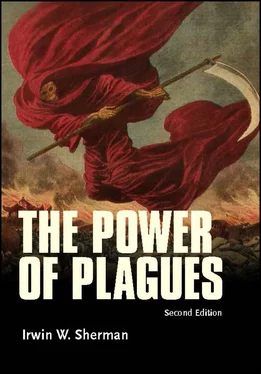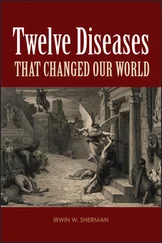In ~2000 B.C. the Latins, a group to which the Romans belonged, and of Indo-European origin, possibly with forebears in central Asia, migrated first into central Europe and then to the northernmost part of Italy. By 1000 B.C. they had settled on the ~700-square-mile volcanic Latium plain, bounded on the north by the Tiber River. The soil was rocky but fertile, and the Latins prospered as farmers. Then, in ~800 B.C., the Etruscans coming out of Asia Minor landed on the coast north of the Tiber, from whence they moved inland, and by 600 B.C. they dominated all of Italy from the Alps in the north to Salerno in the south; here, though, they were halted by the already established Greek colonies. The Etruscans, a highly civilized people who were traders and merchants, brought to the Romans their first contact with the eastern Mediterranean. The Romans made allies of or subdued the other tribes of the Latium plain, including the Etruscans. By the beginning of the 4th century B.C. Rome was the leading city in central Italy. In time that city became an empire that would last 500 years. By 350 B.C. the Romans had moved southward, reaching the Greek settlements at the foot of the peninsula, and in 275 B.C., when the Greeks were defeated, Rome became the master of the entire Italian peninsula. Later, there would be other conflicts and other victories over Carthage (264-241 B.C., 218-201 B.C., and 149-146 B.C.), the Macedonian Empire of Alexander (197 B.C.), the Seleucid Empire in Syria (190 B.C.), and the Ptolemaic Empire in Egypt (31 B.C.). By 55 B.C. the Romans had invaded Britain.
Rome lived off its imports. Cargo shipped from the provinces was unloaded at the seaport at Ostia and carried up the Tiber River to the city. The Roman Empire, with its center in Rome, developed an ever-extended series of colonies, and by the year A.D. 100 there was a vast trade network that included India, China, and the northern parts of Africa and the Middle East. The regular movement of goods and people to and from Rome also made for the spread of infections. Thus, over time the chances of the Mediterranean population contracting an unfamiliar infection became greater and greater.
There is no evidence that malaria was a public health problem in Italy among the ancient Etruscans, but there is clear evidence of malaria being devastating to the Roman Empire. Indeed, in ancient Rome temples were dedicated to the goddess Febris, who is described as an old hag with a prominent belly and swollen veins. The medical literature of the time also contains accurate descriptions of malaria, and there are references to marshes as the source of the disease. The disease was so prevalent in the marshland of the Roman Campagna, near Ostia, that the condition was called the Roman fever, and eventually it was given the Italian name mal’ aria , literally “bad air,” because it was believed that this recurrent fever occurring during the sickly summer season was due to vapors emanating from the marshes. For almost 2,000 years Rome was the home of the Roman fever.
Although malaria was uneven in its distribution and its endemicity fluctuated cyclically in the Roman Empire, epidemics of malaria occurred in Rome and the Campagna every 5 to 8 years. The Pontine Marshes southwest of Rome were a lethal source of malaria. As one writer put it, “the Pontine … creates fear and horror. Before entering it you cover your neck and face well before the swarms of large bloodsucking insects are waiting for you in this great heat of summer, between the shade of the leaves, like animals thinking intently about their prey. … Here you find a green zone, putrid, nauseating where thousands of insects move around, where thousands of horrible marsh plants grow under a suffocating sun.” Not even the Romans, who were able to conquer most of the Western world, were able to master the Pontine marshes. It has been estimated that even if malaria occurred in only one-sixth of the Campagna it could devastate the agricultural economy. Indeed, it required the efforts of the fascist dictator Benito Mussolini in the late 1920s to drain and fill these swamps, making them habitable and agriculturally productive. Colonies on the coast of Italy also failed because of malaria, and in some districts of Rome, where the urban population may have reached 750,000 to 1 million people, the death rate could be quite high. In some particularly unhealthy places life expectancy was only 20 years, whereas in places where malaria was absent life expectancy could be as high as 40 or 50. In the Roman Empire malaria was a disease of children, but severe illness was also found among immigrants without acquired immunity. After the establishment of Christianity, the Roman fever plagued pilgrims visiting the holy city. Some have claimed that foreign invaders of Rome—particularly the French and Germans—were more effectively repelled by the deadly fevers of the Pontine marshes and the Campagna than any man-made weapons. Indeed, Alaric died from malaria during the siege of Rome in the summer of A.D. 410, and Attila the Hun’s failure to march on Rome in A.D. 452 was partly due to the threat of this disease as well as a famine in Italy. And in A.D. 1155, Frederick Barbarossa and his army were so decimated by malaria at Rome that they were forced to retreat across the Alps.
Plagues and the Rise of Christianity
Plagues of various sorts were not unfamiliar in Roman history. An epidemic—probably smallpox—struck the city in A.D. 65. It was brought, or so we believe, by Roman troops who had been campaigning in Mesopotamia. Mortality was heavy, and in some cases half the population died. A new round of smallpox infections began in A.D. 251 to 266, and it was reported that 5,000 a day died at its height. By this time measles may also have become established among Mediterranean populations. No accurate estimates of population losses can be given, but they must have been high.
The early Romans owed their loyalty to their pagan gods. Their religion was one of form and ritual rather than of spiritual observance. In essence, the Romans had a contractual relationship with their gods: if you do something for me, I will do something for you. At first their religion was animism: gods represented the spirits in water, rocks, fire, trees, beasts, sun, moon, stars, and lightning. The spirits were amoral, and they either helped or harmed the worshippers according to the manner in which they were treated. In effect, the role of religion was the appeasement of the multitude of gods so that the worshippers would receive some kind of benefit. From the Etruscans the Romans borrowed elaborate religious ceremonies and gods with a human form, a form that could be represented as painted images or carved statues. And it was the Etruscans who gave the Romans their earliest contact with the gods and goddesses of Greece, many of whom were absorbed into the Roman religion. Cults developed to worship specific gods at specific times (called holy days or, later, holidays), and those who presided over the cult rituals were called priests, but these individuals were neither moral nor spiritual. In time the emperor himself became a god, and so loyalty had to be sworn to him.
Then, in the 1st century A.D., there appeared a new kind of religion, preached by Jesus of Nazareth (the Christ) and his disciples. Although Jesus preached for less than 3 years in what is now Palestine, his many disciples traveled throughout the Roman Empire spreading the word of the Christian religion. Jesus’ preaching took the form of parables and miraculous healings; he encouraged the poor and the oppressed, spoke of forgiveness, and proselytized that there should be detachment from wealth and property and that the outcasts and sick of society should be given special care. Because the Roman Empire consisted of many cities, Christianity became an urban movement. (Indeed, because of this, those living outside the city were called rustic or, in Latin, paganus , from which the word “pagan,” meaning non-Christian, is derived.) Jesus gathered around him a community of followers who regarded themselves as God’s people, and they went forth establishing a missionary movement. The early Christians had a moral ideal: they separated themselves from pagan idolatry and they espoused universal salvation. Because Jesus’ disciples preached the coming of a new king, it appeared to the Romans that there might be a revolution in the making. But at the outset the Romans simply regarded Jesus as a minor political rebel whose followers could be used as convenient scapegoats. As a result, the Christians were blamed for all types of disasters, including plagues, inflation, fires, and even barbarian incursions. The reasons for this were many: the Christians did not worship the emperor, they did not observe the pagan ritual acts, they insisted that they alone possessed God’s truth, and Christ’s teachings were critical of the established order. Christ’s omnipotence was also believed to be demonstrable by those who had survived a debilitating or deadly disease.
Читать дальше












